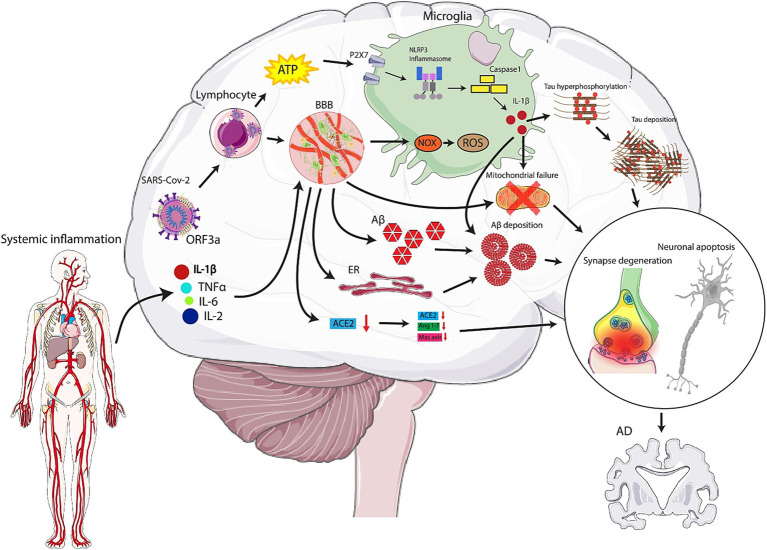Figure 1.
Mechanisms by which SARS-CoV-2 can play role in the pathogenesis of Alzheimer’s Disease (AD). High levels of cytokines and chemokines can cross the blood brain barrier (BBB), causing neuroinflammatory responses and disruption. Virus-infected lymphocytes and monocytes penetrate the central nervous system (CNS), leading to activation of microglia and astrocytes and resulting in neuroinflammation. Activated microglia trigger NADPH oxidase (NOX) enzyme, significantly increasing reactive oxygen species (ROS) production, which impacts neuronal oxidative disruption and can aggravate neurodegenerative diseases, including AD. Also, the virus can enter the nasal epithelium and travel along the olfactory nerve fibers. It uses the ACE2 receptor, present in the nasal epithelium, to enter cells. From there, it hijacks the cellular machinery to replicate and spread along the olfactory nerve. Once the virus reaches the olfactory bulb, it can potentially spread to other parts of the brain. The proximity of the olfactory bulb to the brain allows the virus to access deeper brain structures.

